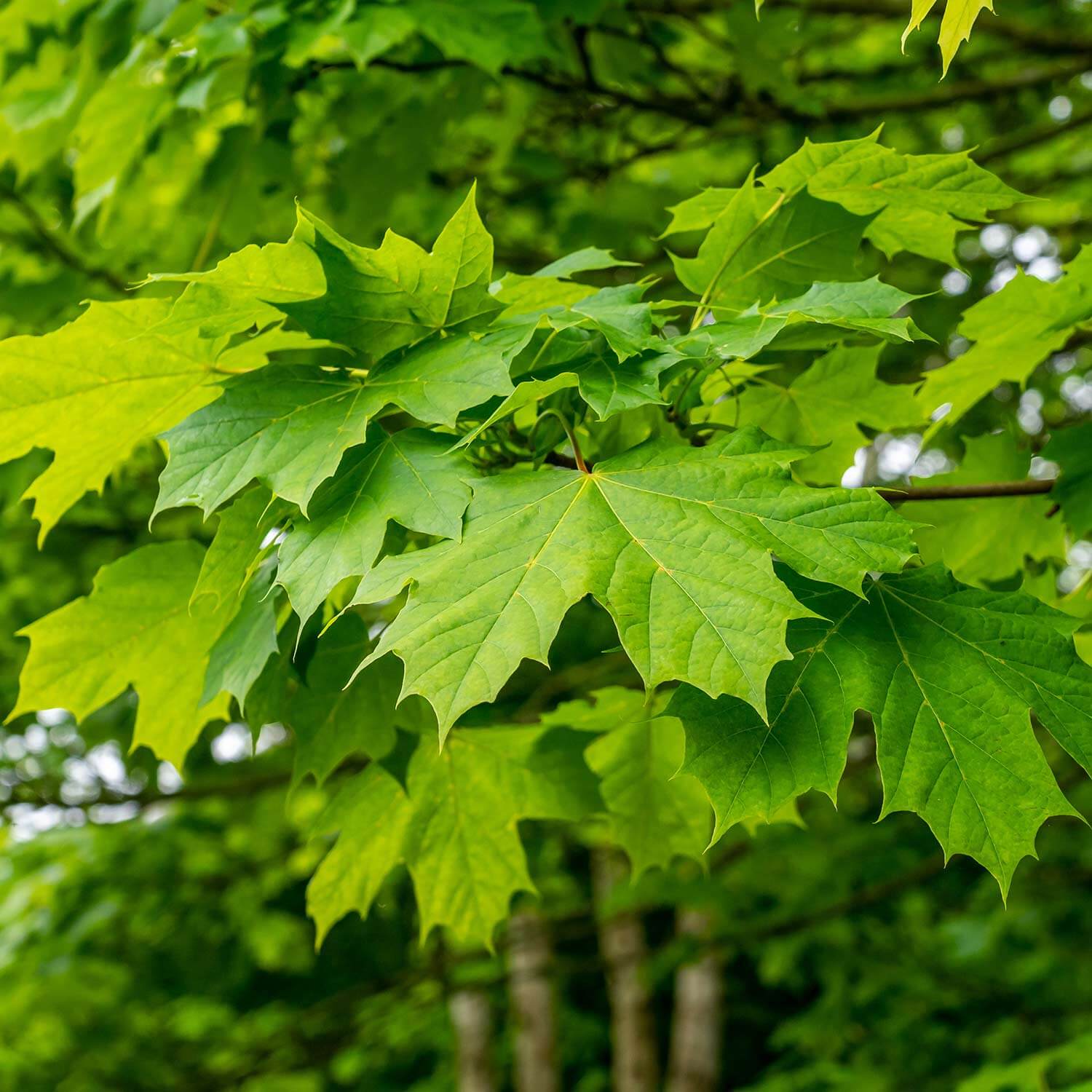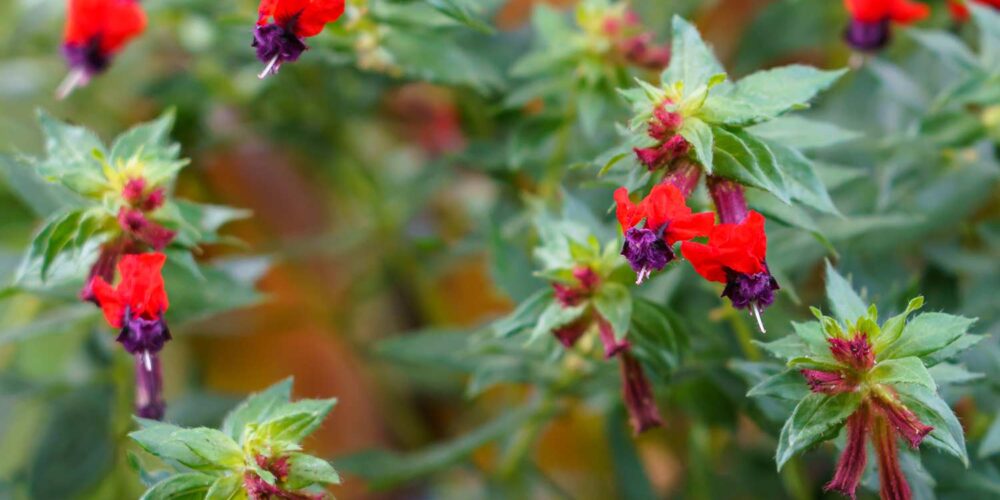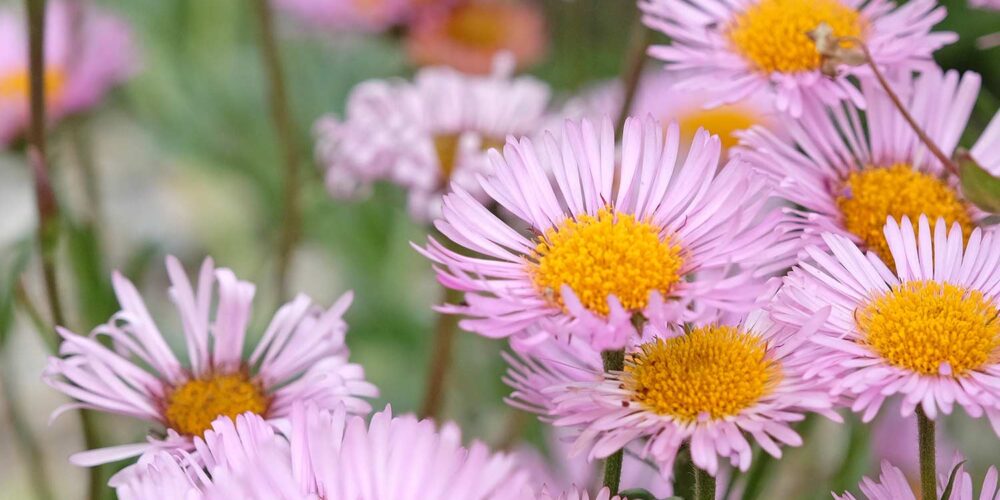
About Acer saccharum (Sugar Maple)
This deciduous shade tree is known as Acer saccharum and commonly as Sugar Maple. This species is prized not only for its large stature providing ample shade to those below, but when planted it also is highly tolerant to heavy shade with minimal direct sun exposure. Reaching an average mature landscape size of 40-60′ high by 30-60′ wide, this tree grows in a rounded form at a slow-moderate rate growing up to 2′ per year and taking more than 30 years to reach maturity. Its maple shaped leaves feature between 3 and 5 lobes that emerge green in color before turning shades of orange and yellow in the fall season. In the spring little green flowers emerge that are small enough to be considered insignificant while its two winged fruit called samaras are noticeable as they drop due to their uncanny resemblance to a helicopter wing.
Care and planting instructions
Plant your Sugar Maple tree in an area that receives partial sun to partial shade exposure. Using well draining soil, water regularly after planting to help encourage quick root establishment, then reduce frequency to weekly except for periods of extreme heat. It has been noted that this variety does not tolerate drought-like conditions and is susceptible to leaf scorch. If desired, cut back any unwanted branches or prune for shape in the spring or even the summer months when the sap content is at its lowest level.
Landscape design ideas
Acer saccharum is an obvious choice for shaded areas and areas seeking shade cover. This tree is an excellent addition to parks and street medians for reasons previously mentioned as well as the beautiful foliage color change during the fall season.


